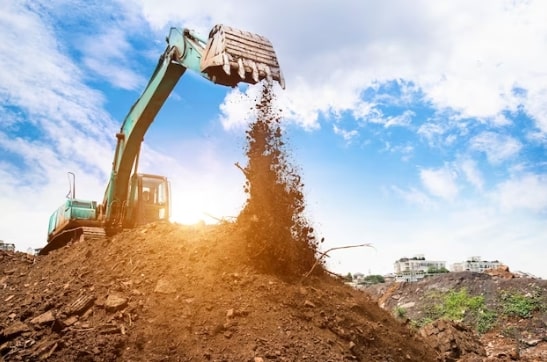Excavators are popular earthmoving machines that typically have a cab, a long arm, a bucket or scoop at the end of the arm, and tracks for mobility.
They are most commonly used to dig trenches, holes, and foundations, as well as transport heavy material. They also come in a variety of different sizes and types for specific purposes.
An excavator is a heavy-duty construction equipment that comes in various sizes and can be used for digging, lifting, and transporting materials. It typically consists of a cab, long arm, bucket, and tracks for mobility.
Excavators are commonly used in building and construction projects, but they can also be found in mining or forestry operations. They are also used for landscaping and demolition.
The size of the machine you choose will depend on your project and what type of work you plan to perform. Mini excavators can be used for small residential projects, and large excavators are great for commercial or industrial projects.
A digger is an important piece of equipment for construction, and it can make a big difference in your project’s success. But, before you buy or rent one, it’s important to understand what an excavator is, how it works, and the difference between the types of models available.
Digging Depth: The depth capacity of an excavator determines how much it can dig and how deep you can go. It’s also important to consider whether you can upgrade your digger with a longer boom to reach more depths.
Reach: The boom of an excavator determines how far it can dig while remaining stationary, and it may be a good choice if you need to work near a wall or structure. It also affects how easy it is to navigate in tight spaces, so you should always choose a model with the right reach for your needs.
Lift Height: If you need to load materials onto a structure or into massive trucks, it’s important to choose an excavator with a high lift height. This will help you load more material onto your digger in a short period, saving you money and reducing the amount of fuel you use.
Counterweight: The weight of the counterweight is primarily what keeps an excavator stable during digging and will also determine how much it can lift at once. A larger counterweight will require more maintenance and be less efficient than a smaller one, so it’s important to find the right balance for your construction project.
Undercarriage: The undercarriage of an excavator is the part that houses the moving parts of the machine, including tracks and wheels. These parts allow the excavator to move around, and some are even designed for traction so they can easily drive over obstacles.
Cab: The cab is where the driver sits, and it allows him to control the machine. The cab can rotate 360 degrees for improved visibility and safety, and it’s equipped with a steering wheel for easy maneuverability.
Attachments: The attachments that come with an excavator can be a variety of different types of tools and machines. Some examples include augers for digging holes, hammers for breaking up hard concrete or rock, rippers, and compactors.
There are a wide variety of excavators on the market, and many of them offer specialized capabilities to meet the needs of different construction projects. Some of them specialize in demolition, while others are designed specifically for mining.
Types
Excavators come in a variety of shapes and sizes. They’re primarily used for earthwork, but they can also be used in construction and demolition jobs.
Standard excavators use hydraulic power and have a boom, stick, and bucket attached to the front of the machine. They can rotate a full 360 degrees for digging, moving, and dumping materials.
In this paragraph, we discuss What Is An Excavator, excavator machine.Crawler excavators run on tracks (like a tank) that allow them to work in virtually any type of terrain. They are slower than wheeled excavators but they are ideal for mining, trench digging, and landscaping.
Suction excavators use a water jet to loosen soil and remove debris. They also cut with sharp teeth at the edge of the pipe, which cuts through heavy materials quickly.
Long-reach excavators are a variation of standard excavators that feature a lengthy arm and boom to dig deep into rocky, hilly, or otherwise difficult terrains. They are often used in demolition projects that require precision or when it’s impractical to use a wrecking ball.
Functions
An excavator is a vital machine on construction sites. Its many functions allow professionals to perform a variety of tasks efficiently and safely.
In most cases, an excavator is operated from its cab where the operator sits and controls the bucket, boom, and stick with a joystick and foot pedal system. The cab also houses gauges that occupy the operator’s vision.
In this paragraph, we discuss What Is An Excavator, excavator machine.The excavator arm is the major moving part of an excavator and provides up-and-down and closer-and-further digging movement. It consists of a boom, stick, and bucket connected to the house by three joints that pivot at a certain connection.
The hydraulic cylinders on the arm allow the operator to dig to exact measurements, place materials, spread material, or even load waiting equipment. In addition, they can be used to scoop soil and move it from one area to another by contracting each cylinder at specific degrees.
Read more interesting articles at Blogging Fort

